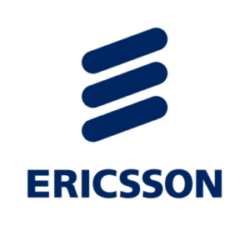Ericsson (NASDAQ: ERIC) is shoring up its dominant position as the world’s leading wireless equipment supplier. In its 2Q20 earnings report, the company showed solid albeit slower growth in key markets.
For 1H20, Ericsson reported worldwide sales of US$11.7 billion, up 2 percent from US$11.5 billion in 1H19. The company is on track to hit its 2020 sales target of US$23.5-26.4 billion, counting on an uptick in 2H20 capital expenditures among its global communications service provider customers.
Ericsson produced an adjusted operating margin close to its target of 10 percent while reaffirming its 2022 operating margin guidance of 12-14 percent.
Ericsson acknowledged that it now has 99 firm contracts, with the 100th in the offing, for 5G network deployments in 27 countries around the world. Of the total, 54 networks now are carrying live traffic.
A significant 13 percent jump in sales for the period came from the North Asia region which includes China, Japan, and South Korea.
Much of that increase resulted from Ericsson scoring big in China with contracts from the country’s three largest wireless carriers: China Mobile, Chine Telecom and China Unicom. These major wins position Ericsson among China’s leading 5G equipment vendors along with incumbent China-based suppliers, Huawei and ZTE.
North America is Ericsson’s largest market, accounting for 34 percent of global sales for 1H20. Sales for the period reached US$4 billion, up 7 percent from US$3.8 billion in 1H19. Most of those gains are driven by 5G deployments underway among the Tier 1 carriers in the U.S., AT&T Mobility, Verizon Wireless, and the new T-Mobile. All three national wireless carriers in Canada chose Ericsson and Nokia while quietly moving away from Huawei that was their prime supplier for 3G and 4G LTE systems.
Ericsson acknowledged that much of its sales growth came from market share gains at the expense of competitors versus market expansion. The company showed mid-single digit sales growth in Latin America and in the Middle East and Africa, although wireless carriers in these regions are being cautious about future network investments in soft economic environments.
Europe is a concern for Ericsson. Sales declined 16 percent for the period compared to 1H19. COVID-19 had some impact, but many countries were experiencing economic stress even before the pandemic. The company pointed out that Europe’s overall digital infrastructure is lagging other regions by two to three years and Europe cannot afford to get behind in 5G. Government-mandated swap out of Huawei network equipment in the U.K. and other countries could delay 5G deployments. Ericsson points out that many Enterprise applications that run on top of 5G networks are economic growth drivers. Without a growth enabler like 5G, Ericsson believes that Europe could fall behind even further.
The company believes that its innovative features and functionality of its products give it a competitive advantage. To that end, Ericsson is sustaining its research and development programs at a high-level, investing 18 percent of sales in R&D.
The Networks product group with its RF system portfolio accounts for 71 percent of total sales. Networks grew 5 percent in the period year-to-year. Along with its full line of legacy and 5G RF products, Ericsson Spectrum Sharing, the company’s version of dynamic spectrum sharing, is well-received with many customers that see ESS as a cost-effective way to jump start their 5G buildouts.
Interestingly, when asked about the company’s move into Open RAN offerings, company executives acknowledged that Ericsson is in discussions with some carrier customers regarding O-RAN architecture. However, they suggested that high-performance 5G applications are still better served with Ericsson’s proprietary designs since O-RAN would slow down such applications.
By John Celentano, Inside Towers Business Editor






Reader Interactions